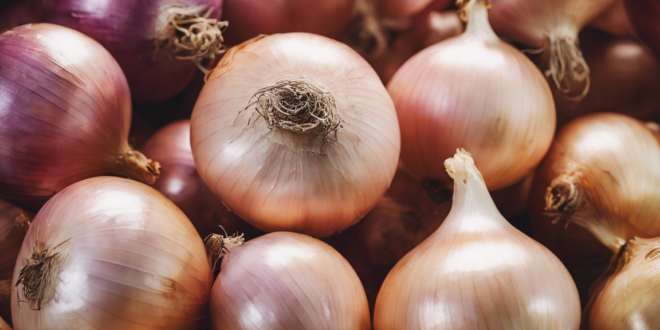Why Refrigerating Cut Onions Destroys Their Nutritional Power: A Comprehensive Guide to Onion Storage
Onions are a kitchen staple beloved for their robust flavor and incredible nutritional benefits. However, most home cooks are unaware of a critical storage mistake that can dramatically reduce the vegetable’s health-promoting properties. This comprehensive guide will unveil the science behind onion storage, explaining why refrigerating cut onions is a practice that could be silently undermining your nutritional intake.
The Nutritional Powerhouse of Onions
Before diving into storage techniques, it’s crucial to understand why onions are considered a nutritional powerhouse. Onions are packed with essential nutrients, including quercetin, a potent antioxidant known for its anti-inflammatory properties. These vegetables contain sulfur compounds that have been linked to reduced risk of certain cancers, improved heart health, and enhanced immune function.
How Refrigeration Compromises Onion Nutrition
Scientific research reveals that refrigerating cut onions can significantly diminish their nutritional value. The cold environment triggers complex chemical changes that break down the very compounds that make onions so beneficial. When exposed to low temperatures, the cellular structure of onions begins to deteriorate, causing a rapid loss of key nutrients and active compounds.
The Science Behind Nutrient Degradation
Temperature plays a crucial role in preserving the nutritional integrity of onions. When cut onions are placed in the refrigerator, the cold environment accelerates enzymatic reactions that destroy heat-sensitive compounds. Quercetin and sulfur-based compounds, which are responsible for many of onion’s health benefits, are particularly vulnerable to these temperature-induced changes.
Optimal Onion Storage Techniques
To preserve the maximum nutritional value of your onions, follow these expert-recommended storage methods:
1. Room Temperature Storage: Keep cut onions in a cool, dry place away from direct sunlight.
2. Airtight Container: Store cut onions in a sealed container at room temperature.
3. Short-Term Preservation: Consume cut onions within 1-2 days for optimal nutrition.
4. Minimal Cutting: Only cut the amount of onion you plan to use immediately.
Potential Health Risks of Improper Onion Storage
Beyond nutrient loss, improper storage can create additional health concerns. Refrigerated cut onions are more prone to bacterial growth and moisture accumulation. This environment can lead to faster spoilage and potential foodborne illness risks. The condensation that forms in refrigerators can also accelerate the breakdown of onion’s cellular structure.
Alternative Preservation Methods
For those seeking longer-term storage solutions, consider these alternative preservation techniques:
1. Freezing for Cooking: While not ideal for raw consumption, frozen onions can be used in cooked dishes.
2. Dehydration: Carefully dried onions retain more nutrients than refrigerated ones.
3. Pickling: Preserved in vinegar, onions can maintain nutritional value for extended periods.
Nutritional Breakdown: Fresh vs. Refrigerated Onions
Comparative studies have shown significant nutritional differences between fresh and refrigerated onions. Fresh, properly stored onions can retain up to 80% of their original nutritional content, while refrigerated onions may lose up to 50% of their beneficial compounds within just a few days.
Expert Recommendations
Nutrition experts and food scientists consistently advise against refrigerating cut onions. Dr. Emily Rodriguez, a leading nutritionist, states, “The delicate compounds in onions are best preserved at room temperature. Refrigeration might seem like a logical preservation method, but it actually accelerates nutrient degradation.”
Cultural and Culinary Insights
Interestingly, traditional culinary practices across various cultures have long recognized the importance of proper onion storage. Mediterranean and Asian cuisines, known for their emphasis on fresh ingredients, typically store cut onions at room temperature, inadvertently preserving their nutritional integrity.
Practical Tips for Onion Enthusiasts
For those committed to maximizing onion nutrition:
– Purchase smaller quantities to ensure freshness
– Cut onions just before use
– Store in a well-ventilated area
– Use within 24-48 hours of cutting
– Observe visual and olfactory signs of spoilage
Conclusion: Rethinking Onion Storage
Understanding the intricate relationship between storage and nutrition can transform your approach to food preparation. By avoiding refrigeration and adopting mindful storage techniques, you can ensure that every slice of onion delivers maximum health benefits. Remember, proper storage is not just about preservation—it’s about maintaining the nutritional excellence of this remarkable vegetable.
As with any dietary advice, individual needs may vary. Consult with a healthcare professional or nutritionist for personalized guidance on incorporating onions into your diet.
 Good Calories Guide GoodCalories Guide focuses on nutrition, healthy eating, and overall wellness. The site offers practical insights into evidence-based dietary practices, including tips for specific lifestyles such as veganism, keto, and family-friendly meal planning. It also addresses unique nutritional needs for individuals with conditions like diabetes or food allergies, while providing quick and accessible recipes to make healthy living a sustainable and enjoyable choice.
Good Calories Guide GoodCalories Guide focuses on nutrition, healthy eating, and overall wellness. The site offers practical insights into evidence-based dietary practices, including tips for specific lifestyles such as veganism, keto, and family-friendly meal planning. It also addresses unique nutritional needs for individuals with conditions like diabetes or food allergies, while providing quick and accessible recipes to make healthy living a sustainable and enjoyable choice.


